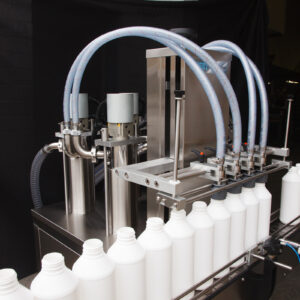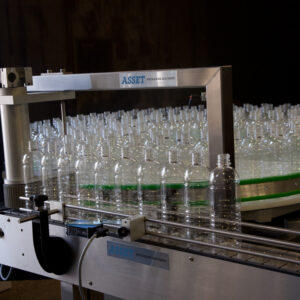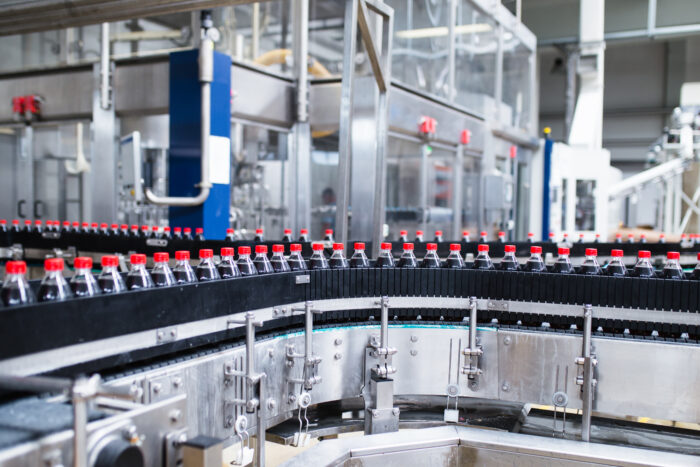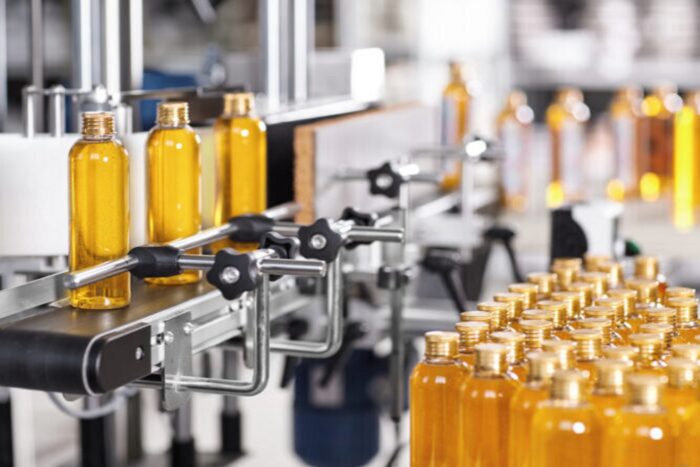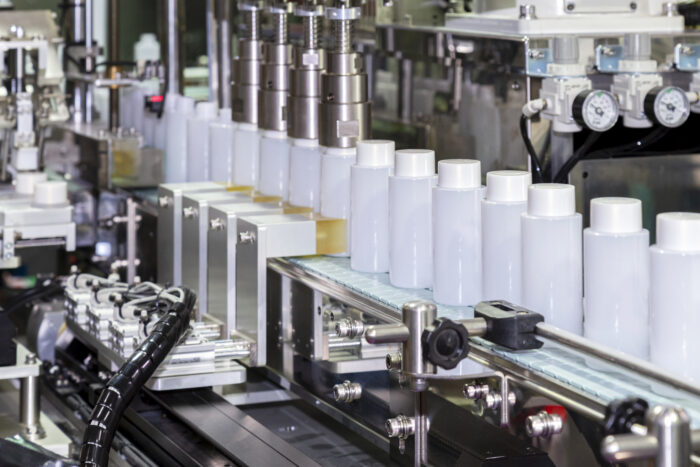Skilled and unskilled labour shortages in manufacturing are always a challenge for industries, from production line processes to bottom-line expenses. To overcome this labour force challenge or streamline long-term output, automated packaging machines can be a cost-effective solution.
Where Labour Supply is Short, Automated Machinery Steps Up
Since the industrial age and the transition from agrarian to urban working environments, searching for suitable workers has been never-ending. It costs time and money and doesn’t always add to profitability if your output declines.
With different types of automated packaging machines, the production line keeps on running. This, in turn, allows you to keep your existing workforce productively engaged without having to worry about additional expenses or delays in output.
Automation earns its keep in small and medium-sized enterprises where your staff are available on shift-work to supervise production output and quality control using their training and industry skillset. Choosing the right packaging machine has the potential to increase productivity, reduce rejections, lower costs, streamline delivery times and contribute to a faster end-to-end turnaround, especially if multiple container options are used by the business.
Liquid filling machines play a big role in the packaging industry. The market is expected to grow globally at a CAGR of 4.2% between 2019 and 2025 as businesses attempt to move away from manpower dependency. For industries like cosmetics, health and beauty and cleaning where full packaging automation is possible, liquid filling, labelling and capping processes free up your staff to focus on higher client contact roles. This contributes to your bottom line – more product, more sales, less waste and lower loss.
Packaging Automation Advantages During COVID-19 and Beyond
Automation is a process much sought after in regulated production environments so that legislated standards and equipment requirements can be met and upheld. Given the challenges that COVID-19 has brought to the domestic manufacturing environment, it’s clear that having consistency between product availability and manufacturing capacity is crucial to keep client orders coming in.
For example, being able to switch your production to chemical or cleaning products is now seeing strong demand through revamped workplace sanitisation processes. New orders for hand sanitisers and deep cleaning solvents from industry organisations appeared to have increased significantly during the pandemic.
Similarly, ongoing R&D along with breakthroughs in the medical science and healthcare industries have brought to light the need for advanced machinery to produce, process and package drugs in bulk. Closer to home, Australia’s agricultural industry suffered devastating shocks as border closures meant that the usual migrant labour workforce wasn’t available. Many agricultural businesses are now turning to automated packaging processes to replace workers in the shed.
On the manufacturing side, your business doesn’t want a fantastic fine for breaching quality control due to a shortfall in labour if workers or staff are subject to stay-at-home orders or self-isolation procedures.
Though COVID-19 challenged industries using packaging like never before, many are rising to the occasion with workarounds that can minimise impact and improve efficiencies, expected to continue well beyond the pandemic.
In Brief: The Cost-Benefit Analysis to Your Business
Using automated machines in manufacturing requires both an initial outlay and commitment. But once up and running, there are many advantages. For one, output can be tailored to your particular requirements. As an example, automated piston machines can be adapted for thick or viscous products like those produced in the food or cosmetic industries. Similarly, gravity-fed machines can improve turnaround times on smaller pharmaceutical and cleaning product lines.
Searching for skilled and committed workers in any industry field is never-ending and time-consuming, which is why keeping your packaging lines running through automated processes when there is a shortfall can be a cost-effective strategy. You can also explore the benefits of initially hiring a machine to see if it suits your work processes or for those times where production output requires upscaling.
A business saves unnecessary recruitment costs by effectively streamlining workforce requirements with robotic automation used in lean manufacturing systems. This is also where labour shortages that can affect output are negated, especially during peak production or in situations like COVID-19 lockdowns.
Financially, maintaining your labour-force focus and relevant industry training can be more of a headache to your production control than investing in automated machinery to lighten workloads. Skilled labour can be directed towards those areas of the business where their time and output is of best benefit to your profits.
Why You Should Investigate Automated Processes as a Cost-Effective Production Solution
While it’s important to consider the initial costs of an automated solution such as a robotic packaging machine especially if you are new to the process, they are likely to provide you with significant cost savings in the long term.
It’s due to their consistent ability to deliver as non-human assets. Consider your current ongoing expenses and training requirements for staff whose work can be aligned to automated systems. Not only does automation processes free up time on the factory and warehouse floor, but they also streamline the steps to get your product from incubation through approval to production delivery and market sales.
Cutting labour force costs without losing staff by realigning them to departments and areas in support of semi-automatic production gives them ‘skin in the game’ while also contributing to their skillset. This can potentially offset future staffing loss if forward contracts end or clients take their business elsewhere as you can redeploy staff to areas of the business in need.
Your End Game Made Easy Using Automatic Processes
Maintaining automated packaging machines in today’s highly technical industrial marketplace is also cost-effective in the long term. The sealing processes used on these machine production lines ensure a high level of sanitation for your products. Overflow fillers, nozzles and hoses can be readjusted to suit the needs of a production process for various products in any one shift.
Asset Packaging Machines offers highly sought-after service on all their machines post-sale, and end-to-end maintenance options for all models. It’s a win-win situation for any business owner conscious of their costs; put in place technical support and machinery that lessens labour force issues while making sure your staff are skilled and working effectively to maintain their knowledge and relevance to the business.
Keep Your Packaging Production Lines Flowing Smoothly Using Automated Systems!
Asset Packaging Machines are regarded as Australian experts in packaging machinery. We provide locally manufactured, high-quality semi-and automatic liquid filling and capping machines.
They allow your business to maintain quota and production output alongside the benefits of having a skilled and focused workforce while reducing costs, production time and aligning business output with your financial goals.
Contact us today to take your step into packaging automation.









